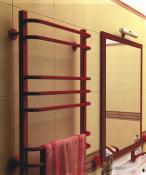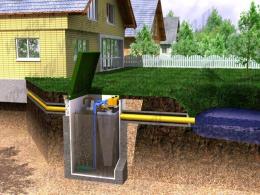Search
Login
Autonomous sewage in a private house. Deep biological wastewater treatment
Any private house becomes many times more comfortable if it has a water supply system and sewage system. Well, in fact, the 21st century is in the courtyard, and many are still running about in need of a wooden structure blown by all the winds, although they could create more comfortable conditions for themselves! Yes, and water from washing machines, bathtubs and washbasins is much easier to drain through pipes than endlessly running around with buckets, making a dirty drain. Moreover, it is possible to arrange an autonomous sewage system with your own hands, you just need to carefully study the advice of specialists and approach this matter with all care.
Content
- Autonomous sewage in a private house
- Drain water disposal
- Installation of sewer pipes inside the house
- Laying sewer video
- Outdoor sewer pipe
- Septic tank device
- Wastewater treatment. Local treatment plants video
Autonomous sewage in a private house
Before you start digging trenches and laying the pipeline, it is necessary to draw a diagram of the location of the pipes, angles and turns. The drawing should be clearly tied to the plan of the house and it is necessary to immediately determine the points of water flow. In the event that the building is multi-story (2-3 floors), it must be taken into account that you will need to install a riser. Only after drawing the scheme, you can begin to choose a place for the cesspool and equip it.

Drain water disposal
Until today, experts have come up with only four ways to dispose of wastewater:
- Concrete settling wells with overflow system;
- Ordinary cesspools;
- Stations of deep sewage treatment;
- Septic tank.
There are simply no other options and therefore you need to immediately decide which one is right for you.
The cesspool will cost quite cheap, but the smell from its contents will spread throughout the area.
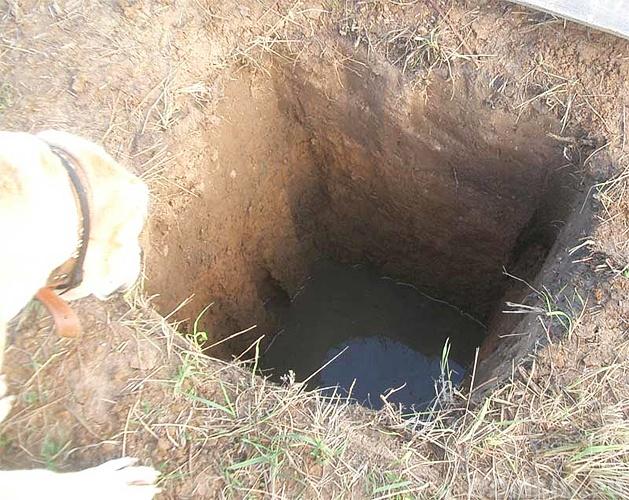
Overflow wells are not bad in principle, but they will have to use a large area for their installation, so this method is rather cumbersome.
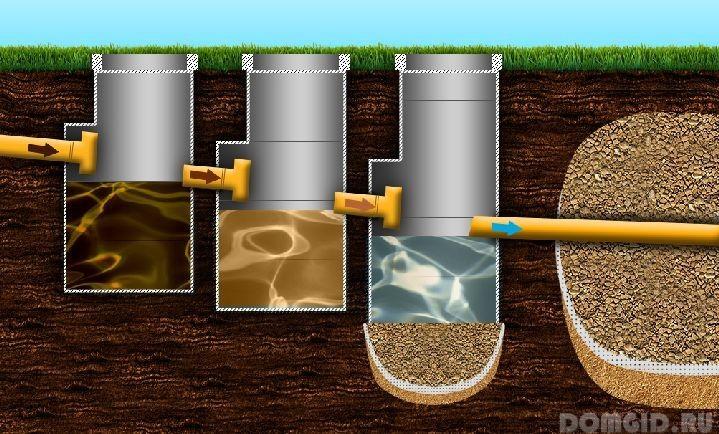
Deep cleaning stations involve the construction of a complex sewer system and the supply of electricity to it, but as a result, it will be possible to qualitatively disinfect waste water.
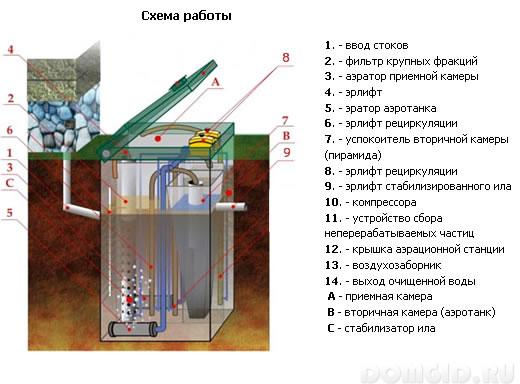
The septic tank is arranged most often, since it is quite simple to install and it is quite easy to maintain. Especially if it will be a septic tank with a biological water treatment system.
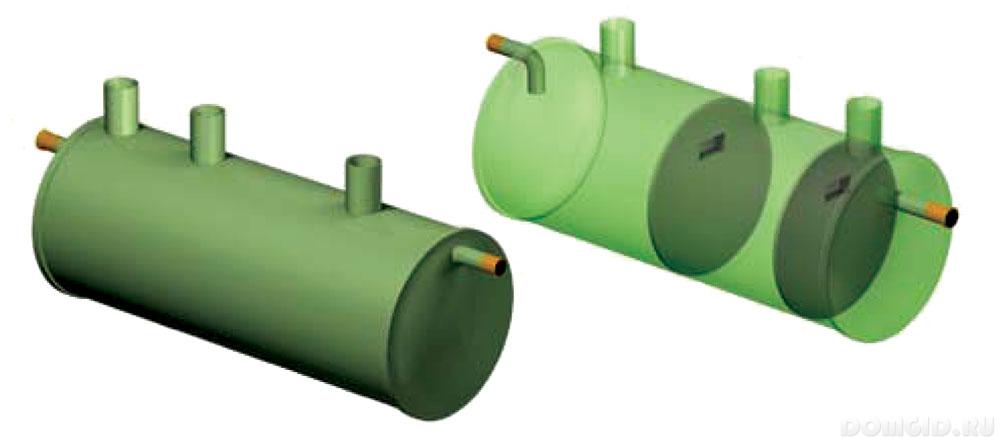
Installation of sewer pipes inside the house
Now it’s very easy to make an autonomous sewer with your own hands, because many ready-made, lightweight plastic pipes are already ready for installation. They are relatively inexpensive and can be mounted on their own even without special knowledge. The required footage can be calculated according to the scheme that you drew and purchase the required amount in any hardware store.
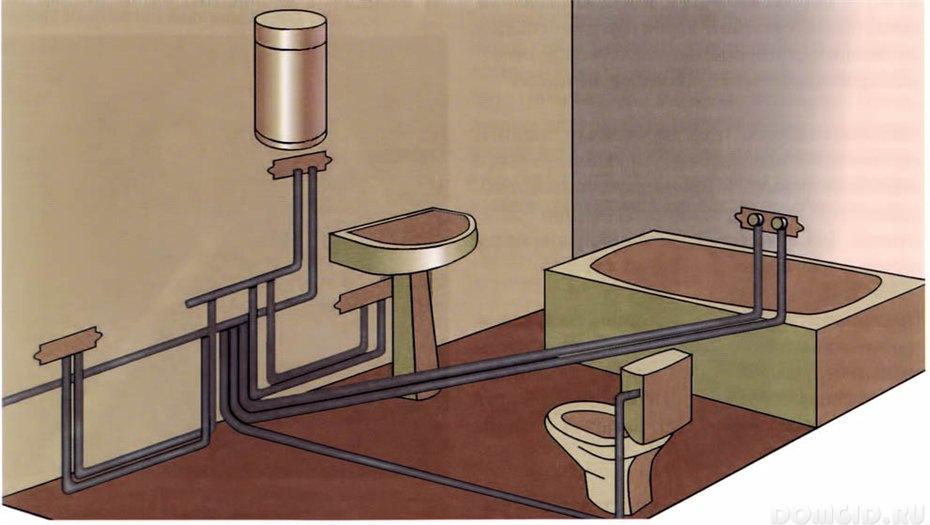
Starting to install pipes, you need to try to make as few turns as possible. Moreover, where you still cannot do without them, you should think about how to reduce their angles. The fact is that if the rotation angle is more than 45%, this will make it difficult for the free flow of drains, and you will regularly clean the blockages in the corner joints.
All connections of sewer pipes must be strictly tight and fittings should be planted on the pipe as tightly as possible.
Outdoor sewer pipe
Laying a pipe to discharge wastewater into a septic tank is also quite simple. For this, in fact, an autonomous sewage system for a private house is designed to remove drainage water to the places of their disposal.
The outer pipe should be located in a trench dug in the ground, as it must be protected from freezing. The depth of the groove directly depends on the characteristics of your climate and the depth of freezing of the soil. It is required to dig a trench under a slight slope from the house towards the drain hole, this will help the sewage to flow freely into the septic tank.
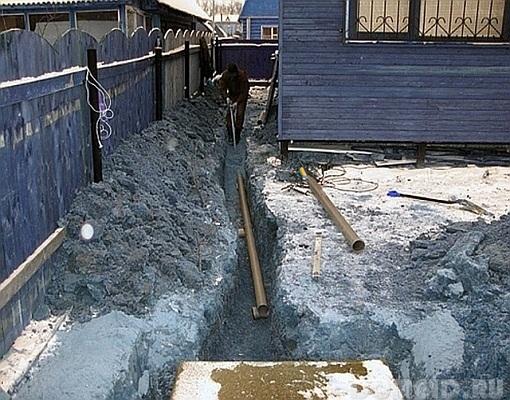
Sand or gravel is poured at the bottom of the trench. Thoroughly rammed. The substrate is needed to prevent subsidence of the soil and, accordingly, the deformation of the pipes.
Next, the external pipe is assembled and laid in a prepared trench.
Since the work is done on the street, you need to make sure that the ends of the pipes are thoroughly cleaned from dust and dirt.
If the pipe was cut along the length, then you need to re-cut the chamfer, since you shortened the factory one. The chamfer is cut with a simple file (unless of course you have a special tool at hand). Then, silicone grease should be applied to the ends of the pipes, which will not only facilitate the assembly process, but also act as a compensator for temperature expansion.
Septic tank device
Now it remains only to solve the issue with the wastewater storage. Since various options have already been considered above, the septic tank will probably be the best choice for self-installation, since the water purified in it can easily be used for watering beds. One of the best methods of wastewater treatment is still a bioseptic, in which the liquid is purified due to the vital activity of special bacteria and enzymes. Ready-made cleaning complexes are sold fully equipped and you just need to install them in the prepared foundation pit and connect the pipeline. As a result of biological wastewater treatment, it is possible to achieve almost complete purification (up to 95%).
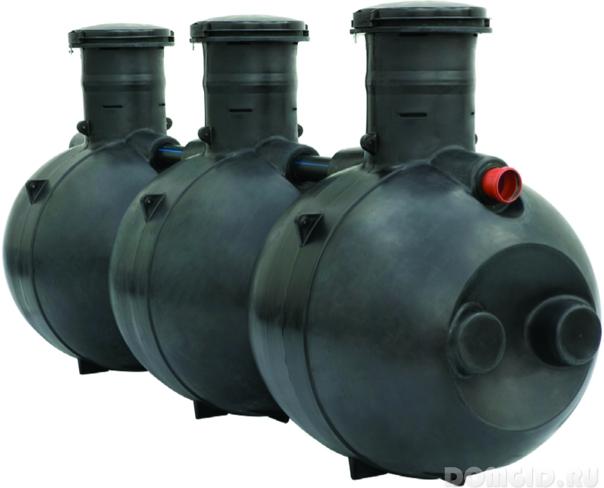
The installation of the treatment plant can be divided into the following stages:
1. Choose a system and determine its volume.
2. Dig a pit under the complex, guided by its size. Pour the bottom of the pit with a sand and gravel mixture and compact it.
3. Install the complex in the pit and connect the pipes for draining the effluents.
4. The installation is insulated, because during large frosts the liquid inside can freeze. The need for insulation depends on the climate.
5. Water is poured into the unit. The filling level is indicated on the inner walls.
6. All voids between the outer walls of the complex and the pit are filled with sand.
7. The biological complex is starting up.
That's all. The complex is connected and started to work. Now you do not need to be afraid that the fetid smells of sewers in the heat will spread throughout the site. There is no need to call a sewage machine twice a year, which will pump out the sewer. Indeed, the technology of wastewater treatment with bacteria and enzymes makes it possible to reuse the liquid, and you will ensure uninterrupted watering for your plantings.
